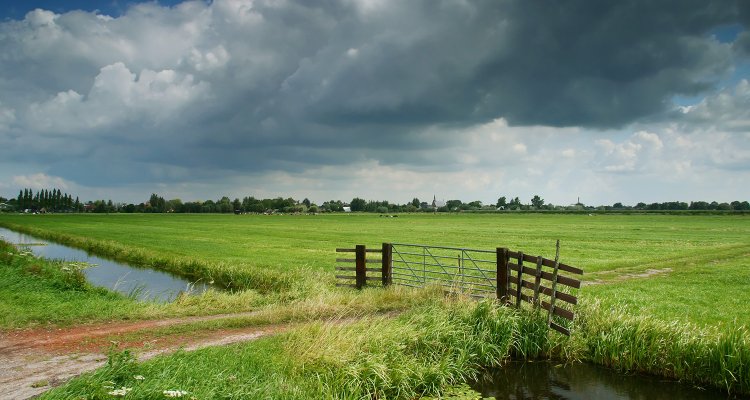
Interview
Water and Soil Guiding in practice: ‘Laag Nederland 2050’ project
How can the water and soil guiding approach be applied in practice? In the Laag Nederland 2050 project, scientists from Wageningen University & Reseacrh collaborate with civic partners to develop perspectives the rural regions. Guido Bakema, a senior water and soil researcher, explains the details and results.
These areas call for a long-term perspective. A farmer investing in his business now expects to do so for the coming thirty years.
‘Water is continuously pumped from the soil in a considerable part of the Netherlands. And necessarily so, or the inhabitants of those regions will get wet feet. The regions affected are those that are partially below sea level: Zeeland, Noord and Zuid-Holland, Flevoland, Friesland and a small part of Groningen. Together, these areas are referred to as Laag Nederland (the lower Netherlands).
Laag Nederland faces several challenges in the upcoming decades. Consider, for example, subsidence, salination and desiccation. The question is how we will address these issues as well as the rising sea levels and the expected increase in extreme weather. How can we create a water and climate-robust natural system in spite of these conditions?’
Three regions
‘There are three regions involved in this project: the peatlands in Friesland, the Zeeland islands Schouwen-Duiveland and Waterland-Oost, and peatlands north of Amsterdam. We work with local partners to map what risks the regions may expect, what solutions we can design and what we should and shouldn’t do right now to keep the region future-proof. Thus, we aim to develop a system that can also be applied to other regions in the Netherlands in the future.
The focus currently lies on short-term plans. This is the case in the nitrogen discussion, but also in other areas. Regions focus on their current interests. However, future-proof solutions require a long-term perspective, with a focus on thirty or more years into the future. Only thus can you prevent decisions that may prove to be counterproductive in the future.’
Long term
‘Water and soil guiding means: Following the natural system’s course. Within reason, of course, because doing so in all aspects would mean flooding half of the Netherlands. And that, of course, we won’t do. It doesn’t have to be done today, but we must prevent problems from becoming exacerbated. So, how can you ensure that the solutions you choose today fit in with the soil-water system?’
People tend to think in terms of technical solutions. Friesland, for example, has many low-lying areas. To keep everyone’s feet dry, water is pumped out continuously, which results in drought in the surrounding sand and clay soils. You could apply technical solutions in the sandy areas that help retain water, but if water is simultaneously pumped out of the polders, that won’t work.
After many years of discussions, the province and the water authority have now decided to investigate how they can gradually allow the polders to flood. Not immediately, but as a structural solution based on the water and soil guiding principle. And yes, that will come at the expense of those who are now living and working in these low-lying areas. But if this solution is not implemented, we will eventually face problems in a much larger area.
Another example: In Schouwen-Duiveland, there was talk of constructing a pipeline to replenish water shortages. For such a pipeline to be economically viable, the region would have to grow crops with a higher return on investment – vegetables rather than grain. But such crops require even more water. Thus, if a solution is not diligently considered, you may end up where you started.’
Collective future
‘These areas call for a long-term perspective. Everyone is willing to act, but if they have no idea in what way, they will remain hesitant. A farmer investing in his business now expects to do so for the coming thirty years. So, he wants to know what direction to choose. That is why developing a collective perspective for the future is so important.
My advice regarding water and soil guiding is to refrain from micromanaging but focus on the bigger picture. The water system is regional; seepage and infiltration systems cover dozens of kilometres, rendering a single local dam useless. That is something I would like to underscore: consider whether your solution also fits in with the larger regional system.’